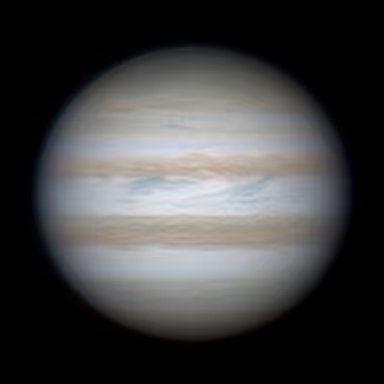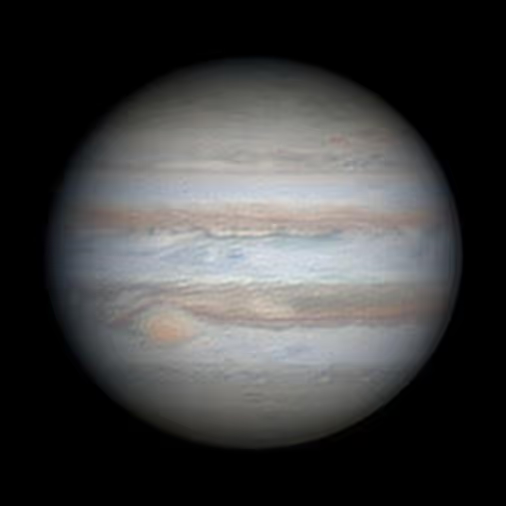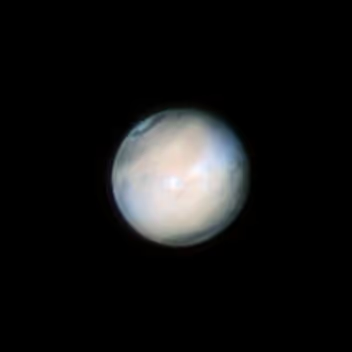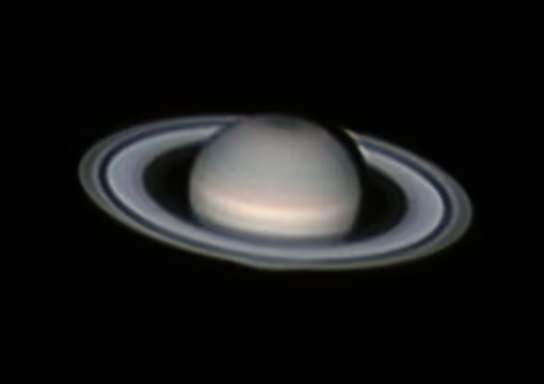Luminance filters in planetary astrophotography
Luminance channel is common for DS images while for planetary ones it's rarely seen. If it happens it's often an infrared filter. So what's wrong with more typical luminance filters and can we actually use them to improve planetary images?

Luminance filter
A typical L filter in a LRGB filter set is pretty much IR/UV cut filter we use so often with color cameras. It passes only visible light and takes care of proper color balance.
So why does LRGB images of planets are so rare? The main historical problem was that it was rarely any good. The problem was atmospheric dispersion - a mono camera with an L filter would have to be pointed really high up the sky to avoid visible blurring effect caused by the dispersion. Nowadays atmospheric dispersion corrector are way more common and affordable but the possibility of doing actual LRGB images wasn't highlighted enough, partially by low elevation of planets in the northern hemisphere which amplified bad seeing problems quite easily.
When doing an LRGB image from a mono camera channel images you need the L filter to be clear and sharp - high quality. RGB channels then can be less perfect and if they are noisy they can even be blurred a bit. As the L filter is very wide (R + G + B) exposure time/gain for it will be lower than for bandpass filter thus it can be easier to get a really good quality image with it.
The problem is that it's easy to get a blurred blob instead of good planet image. Dispersion, seeing conditions all affect it. Some time ago I did try shooting Jupiter through L filter with and without ADC multiple times during one night and all non-ADC images were fuzzy while ADC ones were properly sharp - although not always really good. L-filter is only a win more
filter, yet when it wins it wins hard.
Kodak Wratten filters to the rescue
Infrared passing filters like Astronomik ProPlanet are commonly known, even deep red Baader and alike filters are used quite often. But there is more than a deep red
filter that can work in same fashion. We have orange and yellow as well. Orange will pass some of green as well as red + IR while yellow will pass full green, red and IR cutting only blue.
Cutting shortest wavelengths helps with atmospheric dispersion and some seeing conditions problems. Using deep IR filter won't fix bad conditions and same will be with those wider ones. However if the conditions are good those wider yellow and orange filters should give really sharp and clear images as they pass way more light.
Visual color filters we can get in nearly every astro shop are color glass Wratten filters. Same for deep red IR filters from Baader and alike. Astronomik ProPlanet is however an interference filter. Those visual filters like yellow, orange, red and alike will have a number on their filter cell - that's the Wrtatten type number and can be used to identity it.


Yellow filter will be brightest among all of the color ones and on some planets (like Saturn) brighter than the L filter. It cuts only blue band while passing IR. If the conditions are good it can compete with L filter in terms of providing clear and sharp image of the planet. You should however avoid light yellow
Wratten filters as they pass a bit of UV/B and will have bit more dispersion problems than typical L filter.
If you want to see transmission charts for those filters check measurements made in one of cloudynights topics. Edmund Optics sheet for #12 Yellow filter looks like so:

Color balance
LRGB should be expected to have proper color balance. When you replace the L filter with yellow, orange, red, IR filter then the LRGB composite image will have an altered color balance. Effect depends on planet. Jupiter will turn more pink than brown, while Mars may loose some cloud details and get weird bright colors. Saturn is bit of mixed bag.
More processing
I usually have 2-3 luminance filters in the filter wheel - L, yellow, red or sometimes orange instead of one of the color ones. I shoot through L, R, G, B and then go to color luminance filters. If the conditions aren't good I may drop L filter usage. In case of Jupiter that rotates quickly it's very advantagous to use WinJUPOS derotated LRGB image composites for all of the luminance filters. Standard composition without derotation will very likely show rotation artifacts. If you stick to one filter then it should be manageable without WinJUPOS but overall you should get familiar with this tool.
Examples
Some of my old images made with C11 and C14, with ADC and WinJUPOS RGB and LRGB image compositing.




















Comment article